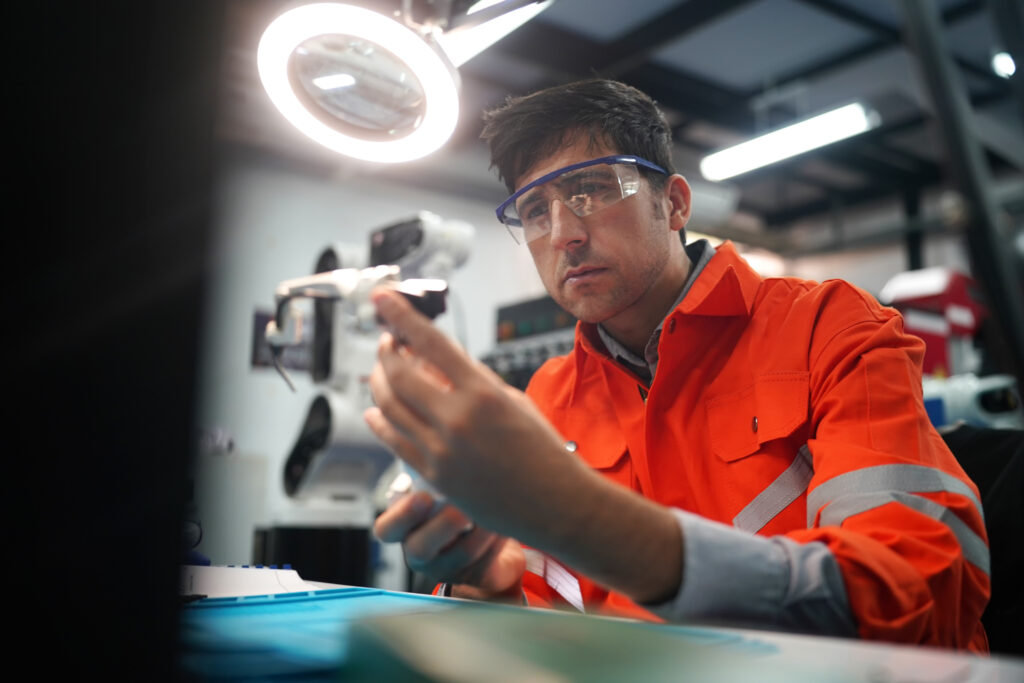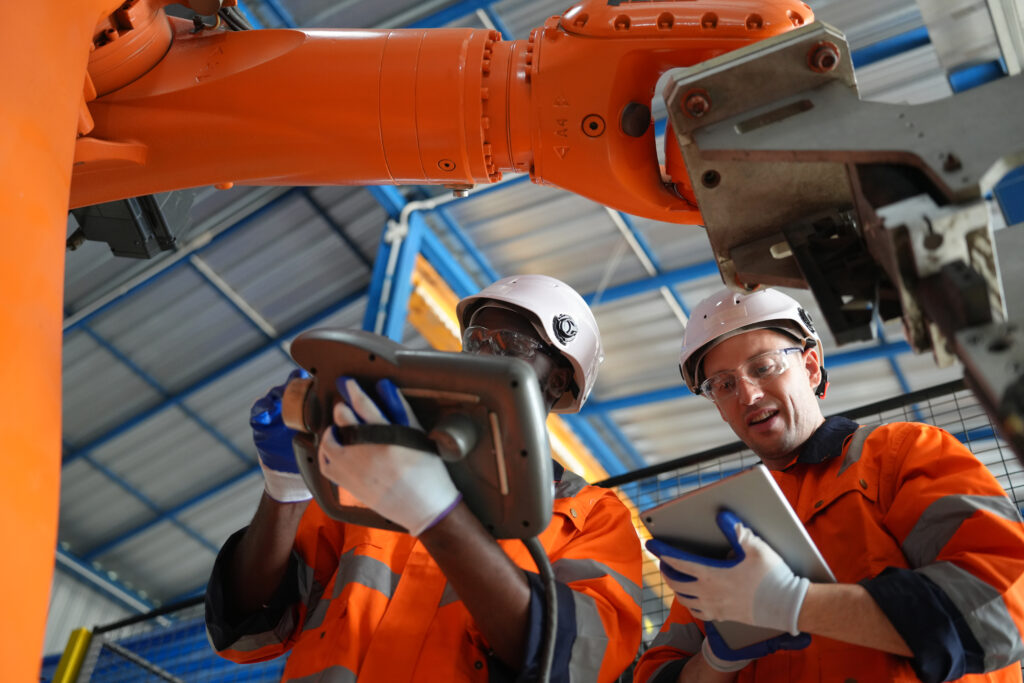
In recent years, the manufacturing industry has undergone a remarkable transformation. With the advent of Industry 4.0, digital transformation has taken hold, and new technologies such as Augmented Reality (AR) have been introduced to increase the efficiency and productivity of manufacturing processes.
In this article, we will take a closer look at the importance of AR in the manufacturing industry and examine how the technology helps to improve production and support employees.

AR in the Manufacturing Industry
The manufacturing industry is an area where AR can offer many benefits. It can help to increase the efficiency and productivity of manufacturing processes and improve working conditions for employees. Here are some of the key applications of AR in the manufacturing industry:
1. Assembly Support
Augmented Reality can help to simplify and speed up product assembly. By using AR glasses or smartphones, employees can receive real-time digital instructions to visualize and verify their work steps, minimizing errors and increasing efficiency.
2. Training
AR can also be used to train employees. By creating AR models, employees can visualize and better understand complex processes or procedures in real-time, reducing training times and improving the effectiveness of training.
3. Quality Control
This technology can help to improve quality control. By using AR glasses or smartphones, employees can check products in real-time and identify deviations from specifications. This allows for timely detection and correction of errors, resulting in higher product quality.
4. Maintenance and Repair
It can also assist with the maintenance and repair of machines or equipment. By using AR glasses or smartphones, employees can visualize the necessary steps and receive real-time instructions to perform the work. This can reduce repair times and increase efficiency.

The benefits of AR in the manufacturing industry
AR offers a variety of benefits for the manufacturing industry. Here are some of the most important advantages:
I. Increased efficiency
Using AR can help employees work faster and more efficiently. The digital support helps them focus on their tasks and minimizes distractions. This can accelerate manufacturing processes, leading to higher productivity and cost savings.
II. Improved quality
By using AR glasses or smartphones, employees can identify and correct errors in real-time. This improves product quality and reduces waste.
III. Increased safety
By using AR glasses or smartphones, employees can receive real-time warning messages or instructions to ensure they work safely. This can help prevent accidents.
IV. Improved training
AR can also be used to improve employee training. By using AR models, complex processes or procedures can be presented in a more understandable way. This can shorten training times and improve the effectiveness of training.
V. Support for remote work
Employees in different locations can collaborate and solve problems in real-time with AR. This can reduce travel costs and improve collaboration.

Costs and Benefits of Augmented Reality in Manufacturing Industry
Implementing in the manufacturing industry requires some investment in technology and infrastructure. Costs may vary depending on the application and complexity of the implementation. For the use of AR glasses or smartphones, costs per unit can range from a few hundred to several thousand euros. In addition, costs may also arise for the development of AR models and applications. However, it is important to consider that AR can lead to significant cost savings in the long run. By increasing efficiency and productivity, production costs can be reduced, and competitiveness can be enhanced. Additionally, improving product quality and safety can reduce costs for scrap, accidents, and repairs. Therefore, investing in AR should be considered a long-term strategy that can contribute to increasing productivity and reducing costs.
Conclusion
AR offers many benefits in the manufacturing industry and contributes to the digital transformation of production. It can help to increase the efficiency, productivity, quality, and safety of manufacturing processes and support employees. However, the use of AR comes with some challenges, such as training employees and integrating it into existing processes. Nevertheless, AR is a promising technology for the manufacturing industry that will continue to gain importance in the future.